This was published 9 years ago
Wildlife safari in Nagarhole National Park, Karnataka, India
Tigers, elephants, monkeys - entering Nagarhole National Park is like walking on to a page of Rudyard Kipling's Jungle Book, writes Kerry van der Jagt.
By Kerry van der Jagt
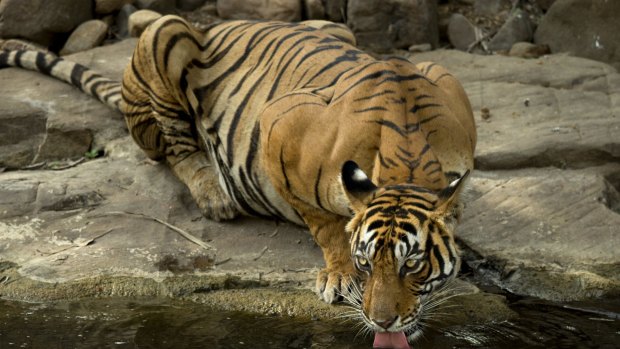
Hard to spot: An endangered Bengal tiger.Credit: Getty Images
I was just eight years old when I was introduced to Rudyard Kipling's The Jungle Book. A birthday gift brought the sly-eyed Shere Khan and big-bellied Baloo into my life, teaching me about the laws of the jungle and igniting a life-long passion for wildlife. More than four decades later I'm in Nagarhole Tiger Reserve, part of the Nilgiri Biosphere Reserve in the state of Karnataka in southern India, hoping to learn more.
This time another gifted storyteller has me spellbound. "Be still," whispers my naturalist guide Saravana Kumar. "Let the forest come to you."
We've pulled over and cut the engine of our open-backed jeep, soaking in the soundtrack of Nagarhole: with its barks, hoots, chuckles and whistles it is an avian orchestra like nowhere else.
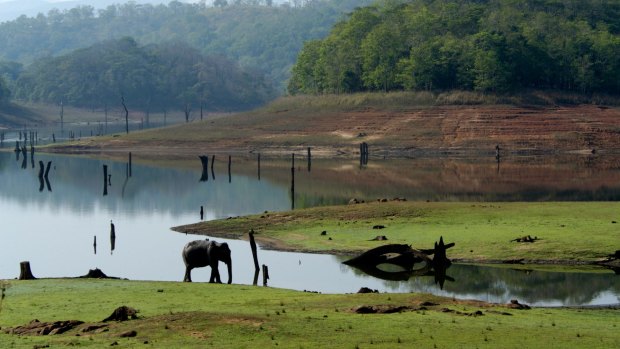
Elephants in the park by the Kabini.Credit: Alamy
Since arriving in Nagarhole, Kumar has helped me make sense of the seasons, that never-ending cycle around which everything revolves. I learn that April is the height of summer, when grasses tremble with tension and the Kabini River shrinks, exposing a riverbed that blooms, almost overnight, into an ocean of green. This fresh pasture is a siren call for the great herds of elephants in neighbouring Tamil Nadu, who, driven by instinct and memory, march for days along ancient migratory routes to reach this sweet banquet. In August when the monsoons arrive, the waterways swell, becoming plump and placid like the forest mammals that give birth while food and cover are plentiful.
"The Nilgiri Biosphere is home to one of the world's largest concentration of Asian elephants," says Kumar. "The annual migration makes it hard to estimate numbers, but it's anywhere between 8000 to 14,000 elephants." I nod in wonder, my eyes darting around the early morning shadows. Shafts of sunlight break the canopy, illuminating delicate spider webs that hang like hammocks between stems of mauve flowers. In the distance, a row of grey boulders becomes a herd of elephants, a pile of leaves erupt into a dance of spotted deer and a smudge on the skyline becomes a crested serpent eagle.
A yelp from a deer and our heads spin. Kumar signals to our driver to reverse, where, in a clearing we find fresh tiger prints pressed into the coffee-coloured mud.
In tiger country no one can afford to relax.
Saravana Kumar
It is the tail-end of the monsoon and I'm midway through a 14-day Spice of the South small group journey with Travel Indochina, having swapped the colour of Mysore for the quiet of Nilgiri Biosphere Reserve. The 5520 square-kilometre reserve, which was once the hunting ground of the former rulers of the Kingdom of Mysore, is now made up of four main wildlife parks – Bandipur, Wayanad, Mudumalai and Nagarhole - each linked by wildlife corridors.
Our base for two nights is The Serai Kabini, a luxury resort of just 20 waterfront villas on the banks of the Kabini River at the southern edge of Nagarhole National Park. The rooms are tastefully decorated in "safari" style, with verandahs and hammocks looking directly across the water. Bathrooms are made of timber and stone with a glass ceiling affording glorious views of the sky and canopy.
We gather in the pre-dawn light to board a series of open-backed jeeps, all of which are managed and co-ordinated by the State Forest Department. Kumar says Bengal tigers are on the knife-edge of extinction. "A century ago there were 40,000 tigers in India, today there are less than 3500 wild tigers left in the world," he says. "Of these, about 1700 are found in India." It is a sobering thought that we may be the last generation to see them in the wild.
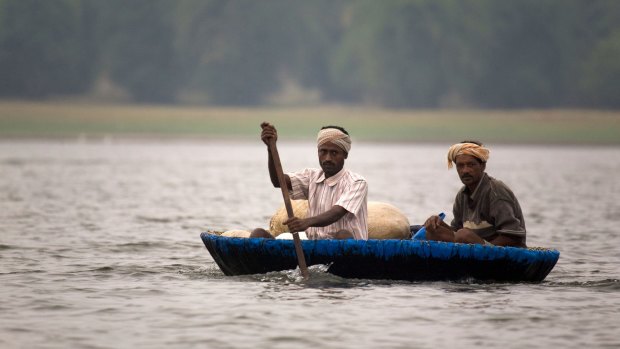
Fishermen paddle a traditional round coracle boat.Credit: Alamy
Nagarhole is tiger territory with a healthy population of about 70 tigers across 643 square kilometres, making it one of the most dense tiger reserves in India. "Some people see three tigers on their first visit," says Kumar. "Others have been visiting for 10 years and have never seen one."
Though we see more tiger tracks, this is as close to Kipling's Shere Khan as we'll get. I'm a little disappointed, but contend myself with the knowledge that these elusive and magnificent creatures are out there, their spirit felt keenly in every snap of a twig or nervous bleat of a deer. "In tiger country no one can afford to relax," says Kumar.
There are of course other splendid moments – a leopard lolling in a tree and a glimpse of a rare wild dog. We watch as a family of langur monkeys throws leaves at us from the treetops and stare into the doleful eyes of a lone male elephant, standing in the shadows just metres from our jeep. We also spot herds of gaur, the world's largest bovine, and three types of deer - barking, spotted and sambar – bounding about like extras from a Disney movie.
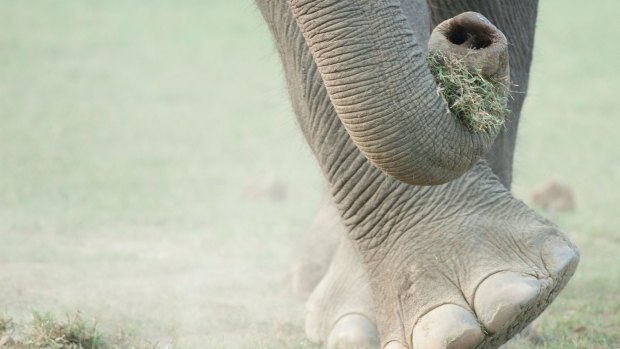
Elephant walk: Nagarhole National Park.Credit: Alamy
That night, after a buffet dinner of Karnataka specialities such as tamarind rice, masala dosa, dhal soup and coconut chutneys, we gather around a bonfire, drinking gin and tonics and talking about our sightings, like excited children going through show and tell. While those who spotted tigers have a certain (dare I say smug) glow, no one is disappointed.
The next morning we navigate a potholed road to a neighbouring village, passing men working in fields and women carrying large urns of water on their heads. A tractor pulling a brightly-painted blue and gold truck trundles past, loaded to the brim, not with crops but with women and children, all smiling and waving, garlands of marigolds bobbing in the morning sun. I ask Kumar if they are heading to a wedding or picnic. "Not at all," he says, with a smile. "They are off to work, picking cotton all day." Not for the first time since arriving in India am I struck mute at the sheer joy for life expressed by people who work so hard and have so little.
On our final afternoon we explore the forest from a different perspective – by boat safari. Gliding through the flooded waterways we pass dead trees, poking out of the tea-green water like gnarled fingers, their branches hiding hornbills, kingfishers and ospreys. While I struggle to identify just one local bird, Kumar's eagle eyes miss nothing. "There's a brahminy kite," he says. And then, "Over here, a malabar-pied hornbill." And so it goes, with eyes on cartoon-like stalks we are introduced to a whole new colour wheel; black ibis, white-throated kingfisher, painted stork, grey heron, grey-headed eagle.
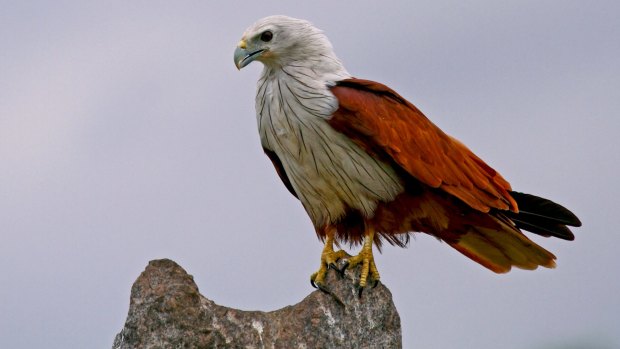
A brahminy kite in the national park.Credit: Getty Images
The captain cuts the engine and we drift towards the reed-lined bank where a domestic dispute between a mongoose family and a macaque family is unfolding. Real estate for a fallen log seems to be the issue. Whatever the cause, we are happy to laugh at their antics as the sun slowly melts into the water.
Under a crimson sky, I'm left hoping that Kipling's cast of characters continue to survive for future generations of children to see in the wild, not just in the pages of books.
FIVE OTHER NAGARHOLE ACTIVITIES
1. Kayak on the Kabini Kayaks can be hired from The Serai for paddling on the Kabini
2. Bike the back roads Pick up a bike from the resort and ride to a local village
3. Paddle a coracle These are traditional bowl-shaped boats used by locals for fishing or getting from one side of the river to the other. Free at The Serai.
4. Learn about "Papa John" Colonel John Felix Wakefield Papa John introduced the concept of eco-tourism to Karnataka in the 1980s. A museum and bar dedicated to him can be seen at Jungle Lodges and Resorts.
5. Visit Mastigudi Temple When the waters recede during summer the sunken Mastigudi Temple appears on the banks of the Kabini.
The writer was a guest of Travel Indochina
TRIP NOTES
MORE INFORMATION
travelindochina.com.au
GETTING THERE
Singapore Airlines operates regular flights from Sydney and Melbourne, via Singapore, to Bangalore and other departure points for Travel Indochina tours see singaporeairlines.com
TOURING THERE
Fourteen-day Spice of the South Small Group Journeys run until March 2015. With a maximum of 16 passengers, the tour starts in Bangalore, and includes Mysore, Nagarhole National Park, Coonoor, Ooty, Munnar, and the Kerala backwaters before finishing in Cochin. Starting from $4060 a person twin share, excluding airfares. See travelindochina.com.au
Sign up for the Traveller Deals newsletter
Get exclusive travel deals delivered straight to your inbox. Sign up now.